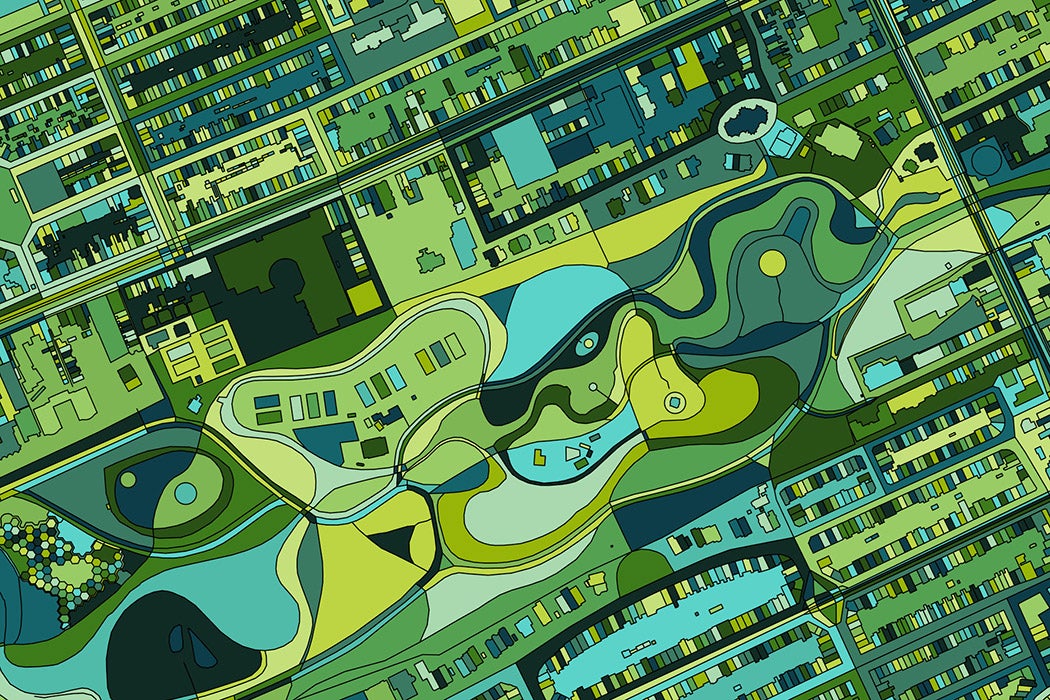It’s officially Hot Girl Walk (HGW) season: a pseudo-gag practice of taking a daily stroll for self-empowerment, reflection, and growth. As an upbeat internet trend, these HGWs in question aren’t just good exercise—they allow folks to bask in the joy of conspicuous productivity.
The link between wellness and the outdoors goes back a long way, and it’s saturated with social implications. Some positive correlations between health and access to the natural environment have been clearly identified, but unpacking specifically why requires deeper analysis. In an article focused on green space in Ghent, Belgium, researchers Ann Van Herzele and Sjerp de Vries examine such connections at the qualitative level.
Using a model that account for five mediators of the relation between green space and health—encouragement of physical activity, stress reduction, attention restoration, social cohesion, and neighborhood satisfaction—they attempt to tease out “the nature of the relationship between the greenness of the local environment and the health and the well-being of its inhabitants.” They consider two neighborhoods (Dierentuin and Sint-Jacobs) that have similar demographics, socioeconomic factors, and housing; they differ only in the provision of green space. Of the two, Dierentuin has the higher number of green elements. In addition, more of its residents have gardens, and more residents are likely to have a “green view.”
The authors administered a survey to 300 residential households in each neighborhood. Questions were designed to collect information on health and well-being as well as the aforementioned mediating factors. The three main dependent variables of “general health, bodily functioning, and general well-being (happiness)” were corrected for personal variations (gender, age, income, education, personality, smoking, alcohol consumption). The authors note that there were no significant differences found in general health and bodily functioning between the two neighborhoods. However, in terms of overall well-being, Dierentuin stood out in a positive sense: respondents living there self-reported as happier. For the authors, this suggests that “neighbourhood greenness is more strongly related to general well-being or happiness than it is with health in the strict sense.”
Of the five mediating factors, “only perceived stress and satisfaction with one’s neighbourhood were related to happiness, the former negatively and the latter positively.” Those living in Dierentuin were more satisfied with their neighborhood. The authors point out that the perception of greenness was the most important predictor of residents’ satisfaction with their neighborhood. Even something as mundane as the view of greenery from the living room affected measured levels of satisfaction.
Weekly Newsletter
A growing topic in policy focuses on city mapping, specifically, improving public access to green, open spaces. As Van Herzele and de Vries report—and what the rise of HGWs suggests—while the proximity to such areas can generate better wellness, perception and visibility is also important.
Typically, policy around improving green spaces—or blue ones, for that matter—either concerns the environment or a region’s citizens. Similarly, most studies on this subject focus on the psychology or environmental aspects of such a correlation. From a policy stance, though, the observations of Van Herzele and de Vries align closely with the growing mission of urban planning initiatives to improve neighborhood access to greenness. The study, conducted in the second largest city in Flanders, may signal Europe’s growing affinity for walkable, sustainable cities.







